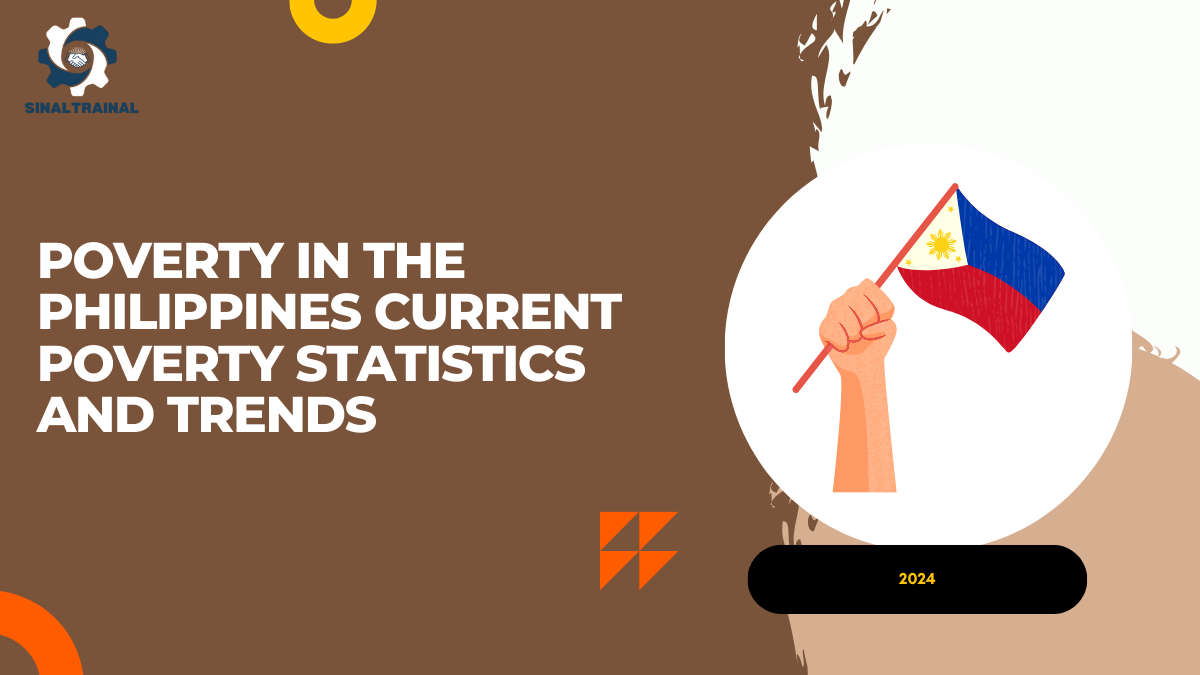In this article, we explore the latest statistics and trends regarding poverty in the Philippines in 2024. Despite ongoing efforts, poverty remains a significant issue. In the first half of 2023, the country’s poverty rate was recorded at 23.7%, with a reduction to 22.4% projected for 2024. Over 110 million Filipinos are expected to continue facing poverty-related challenges, primarily due to rising inflation and the effects of climate-related events.

Understanding Poverty in the Philippines in 2024
The country’s economic growth has followed a boom-and-bust pattern, contributing to the persistence of poverty across different income groups, industries, and regions. One of the driving factors is the country’s rapidly growing population, which strains resources and complicates poverty reduction efforts.
Several contributing factors have been identified in the ongoing poverty situation:
- Low to moderate economic growth: Over the past 40 years, economic growth in the Philippines has been inconsistent, limiting the country’s ability to reduce poverty at a sustainable rate.
- Weak job creation: Employment generation has been insufficient, and many jobs lack quality, preventing full economic development.
- Rising inflation and economic inequality: The financial crisis, coupled with persistent income inequality, has exhausted the potential benefits of economic growth for people experiencing poverty.
Government analysts predict significant economic challenges in 2024, with the country’s Gross Domestic Product (GDP) growth expected to narrow between 6.5% and 7.5%, down from a previous range of 6.5% to 8%.
Key Poverty Statistics in the Philippines
As of the most recent data:
- 18.1% of the population lives below the national poverty line, a figure reflecting significant disparities in wealth distribution.
- 2.2% of the employed population survives on less than $1.90 per day (PPP), a global poverty threshold.
- The under-five mortality rate in the Philippines stood at 26 deaths per 1,000 live births in 2021.
Despite efforts to address poverty, many challenges persist, and the outlook for 2024 suggests continued struggles, though some progress is expected in specific areas.
Moving Forward: Challenges and Outlook for 2024
The start of 2024 comes with hopes for improvement, but the country is still grappling with longstanding economic issues. A recent Social Weather Stations (SWS) survey highlighted an improvement in living conditions in the previous 12 months, signalling optimism for the future.
However, government forecasts remain cautious. President Ferdinand Marcos Jr. has set a goal to reduce the poverty rate to 9% by 2028. The World Bank supports this outlook, predicting a decrease in the poverty rate from 17.8% in 2021 to 10.7% in 2024.
The Poverty Landscape and Government Initiatives
Poverty in the Philippines is fundamentally a state of having insufficient income to meet basic needs like food, shelter, and clothing. Economic growth alone cannot solve the problem, as it requires a multifaceted approach. Recent government interventions have aimed to ease the burden on low- and middle-income households by addressing inflation through targeted welfare programs, allowances, and savings initiatives.
The economy, on the other hand, has shown resilience in recovering from the impacts of COVID-19, with a GDP growth rate of 5.9% in the third quarter of 2023. However, inflation continues to threaten the stability of this recovery.
Government Actions to Tackle Poverty
To mitigate the effects of inflation and control poverty, the federal government has launched several critical measures, including:
- Expanding social safety net programs.
- Implementing economic reforms to boost growth.
- Enhancing savings programs for low- and moderate-income households.
These initiatives are intended to reduce the financial strain on the population and address rising inflation, a critical factor in poverty growth.
Projections for 2024 and Beyond
As of January 2024, the Philippine poverty rate is targeted between 6.5% and 7.5%. While these numbers suggest progress, much remains to be done to sustain economic growth and protect the most vulnerable populations from falling further into poverty. Ongoing challenges, such as inflation and global economic shifts, will likely shape the future trajectory of poverty in the country.
In conclusion, while the Philippines has made strides in reducing poverty, the road ahead remains challenging. Comprehensive government policies, continued economic reform, and support for vulnerable groups will be essential to make meaningful progress in the years to come.
Click here to know more.